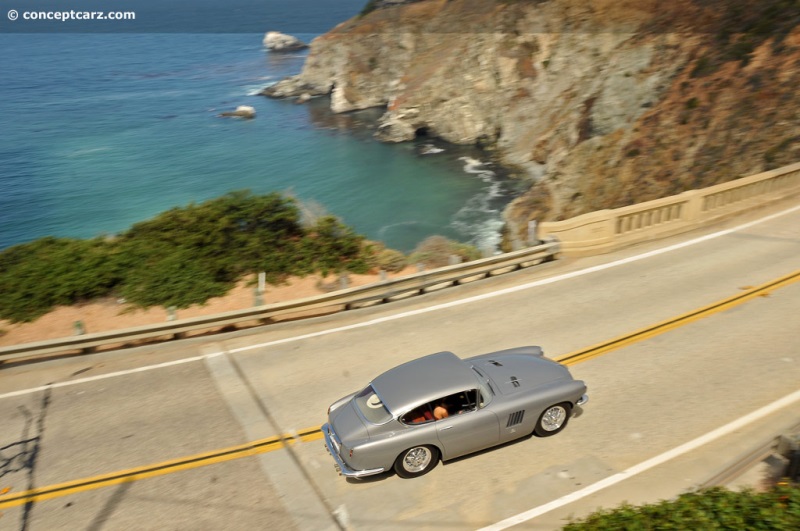Rarely do newly formed automakers catapult ahead of established marques, developing a vehicle so mechanically sophisticated that it becomes the fastest car in the world at the time of production. Beyond just performance, the Pegaso was attractive, luxurious, and exclusive.
Panoramica Coupe by Touring
Chassis #: 103-150-0172
Engine #: 102-019-0172
View info and historyThe meteoric rise to greatness was overseen by Wifredo Ricart, who formerly worked as chief engineer for Alfa Romeo. His talents as an engineer, car designer, and leader helped ENASA revitalize Spanish truck and commercial vehicle production after World War II (ENASA, short for Empresa Nacional de Autocamiones S.A., was the parent company of Pegaso - Spanish for 'Pegasus'). Ricart quickly established a school to train the workers in the skills needed to build the vehicles, and this knowledge would later be used in building high-end cars. The purpose of the high-performance grand turismo was to showcase Spain's technical capabilities to the world. Pegaso's first model was the Z-102, introduced in 1951 at the Paris Auto Salon. It was a good first attempt, but Ricart knew they could do better. The heavy-duty chassis was rigid and ruggedly built, making it suitable for Spain's poor roads but at the cost of weight. The engine was sophisticated, with four overhead camshafts, V8 configuration, and all-alloy construction, but it was designed to accommodate the low-octane gas available at that time. Initially displacing 2,472cc (2.5-liters), later variants received 2,816cc (2.8 liter) and 3,178cc (3.2-liter) DOHC desmodromic 32-valve V8 with multiple carburetors. An optional supercharger boosted output to upwards of 360 horsepower. At the 1951 Paris Auto Show, Pegaso displayed two Z-102s with factory coachwork: a coupe and a faux spyder (the car's top did not open). The designs were penned in-house and both examples received the 2.5-liter engine that produced 140 horsepower. The engine was cast in aluminum alloy to help reduce weight, and by mounting the transmission behind the drive line, the weight distribution became more optimal and the interior space increased. The front suspension was comprised of tubular shocks and torsion bars, while the rear used a de Dion-type setup made in-house under license. The hydraulic brakes were made by Lockheed, with the rear positioned in-bard, and each brake had its own master cylinder for increased safety. 
Panoramica Coupe by Touring
Chassis #: 103-150-0172
Engine #: 102-019-0172
View info and historyThe production examples came standard with dry sump lubrication and an oil-cooling radiator, features usually only seen on race cars. Clients were given the option of 2.5, 2.8, or 3.2-liter engines with one four-barrel, four two-barrel, or two four-barrel Webber carburetors. Although the Z-102 was one of the most mechanically sophisticated automobiles at its introduction, the automotive press in France and the United Kingdom did not bestow the same praise on its coachwork; rather it was described as subdued. The designs created by the in-house design department had been unique and a valiant attempt, and Ricart knew that commissioning Italian coachbuilders to improve upon the design would generate excitement throughout the automotive community. The task of designing a Spyder for the 1952 Paris Auto Show was tasked to Carrozzeria Touring, who endowed it with Spanish flair, including a pair of air intakes on the hood reminiscent of the bull's flared nostrils. Other styling elements that followed the 'bull' motif included the shape of the bull's horns on the outer edges of the windscreen's supports, and the upper edge of the windshield was similar to the horns' silhouette. Appropriately nicknamed the Tibidabo - a hill with a vista overlooking Barcelona - the Touring-bodied Pegaso would account for the majority of Z-102s constructed. French carrozzeria Saoutchik bodied eighteen cars, including three convertibles (and one of the original prototypes). The Saoutchik-bodied cars were as flamboyant as they were expensive (one of the most expensive cars on the market). For customers seeking a more conservative appearance, the ENASA factory offered two coupes, with one known as 'Cupola' (Dome). It had a fastback design, a plexiglass rear, covered front and rear fenders, and was based on design sketches created by Spanish students. 
Panoramica Coupe by Touring
Chassis #: 103-150-0172
Engine #: 102-019-0172
View info and historyThe Pegaso factory built 11 coupes and nine other cars (including prototypes, work cars, and race cars). Spanish designer Pedro Serra created five spyders. The Pegaso Z-103 (Z-102B)
Three Pegaso Z-103 (also known as the Z-102B) Panoramicas were built with coachwork by Carrozzeria Touring of Milan between 1955 and 1958. Pegaso moved production from Barcelona to Madrid in 1955, and the following year was the company's final visit to the Prais Auto Show with a show car. The Z-103 was shown at the Turin Auto Show in April 1956 and at the Paris Auto Salon in October. The low production figures of the Z-103 and the end of the Pegaso automobile resulted from the commercial division's growth and popularity. As sales continued to escalate throughout Europe, the production of commercial vehicles required the entire production facility, ending the car division.
Panoramica Coupe by Touring
Chassis #: 103-150-0172
Engine #: 102-019-0172
View info and historyDuring its brief existence, the Pegaso automobile surpassed all other gran turismos on the road, creating an enduring legacy that would be as mythical as the winged horse it was named after.
by Daniel Vaughan | Sep 2012
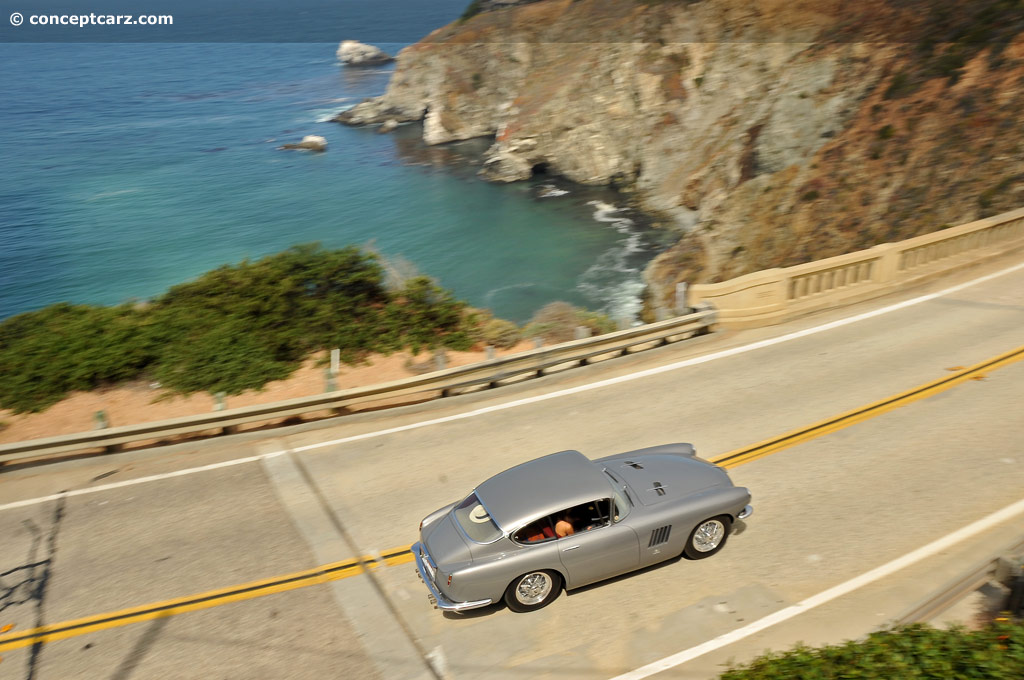
Panoramica Coupe by Touring
Chassis #: 103-150-0172
Engine #: 102-019-0172
View info and history
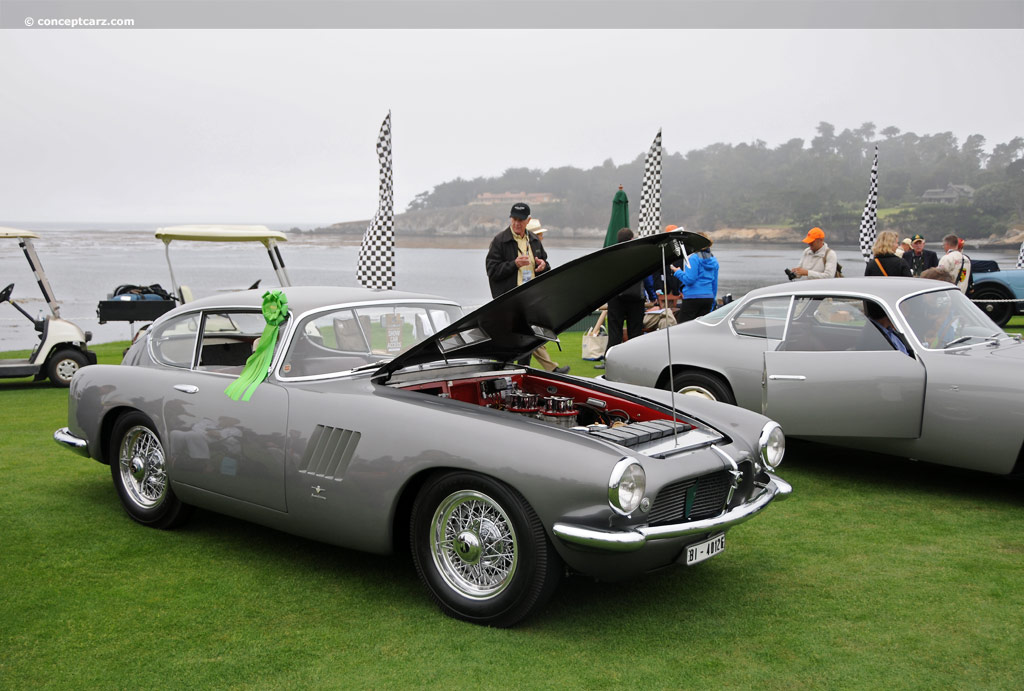
Panoramica Coupe by Touring
Chassis #: 103-150-0172
Engine #: 102-019-0172
View info and history
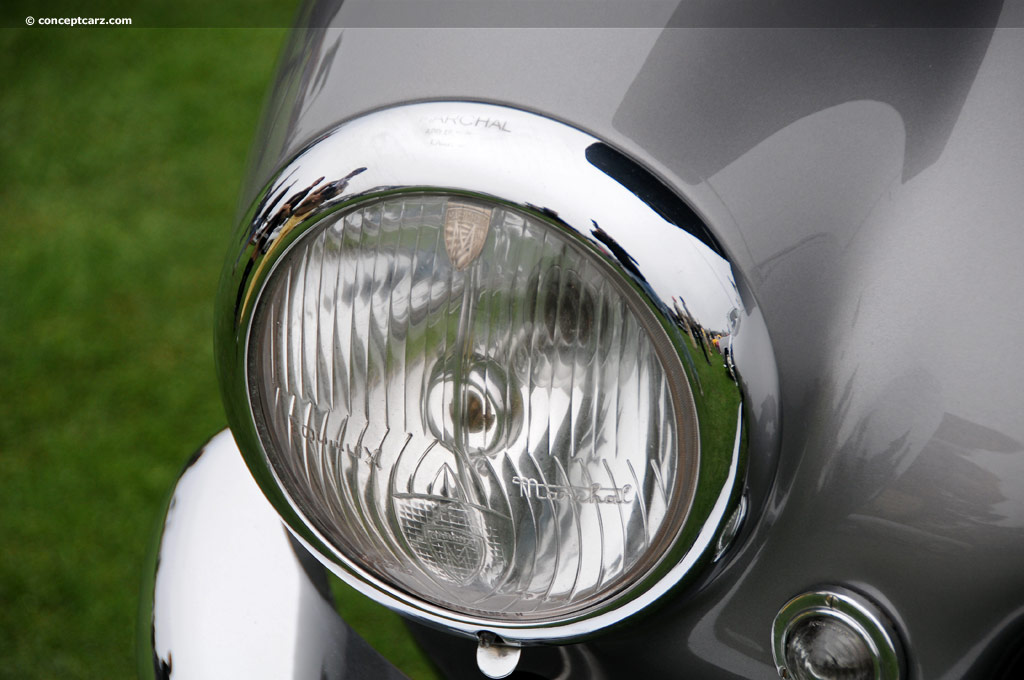
Panoramica Coupe by Touring
Chassis #: 103-150-0172
Engine #: 102-019-0172
View info and history
Three Pegaso Z-103 (also known as the Z-102B) Panoramicas were built with coachwork by Carrozzeria Touring of Milan between 1955 and 1958. Pegaso moved production from Barcelona to Madrid in 1955, and the following year was the company's final visit to the Prais Auto Show with a show car. The Z-103 was shown at the Turin Auto Show in April 1956 and at the Paris Auto Salon in October. The low production figures of the Z-103 and the end of the Pegaso automobile resulted from the commercial division's growth and popularity. As sales continued to escalate throughout Europe, the production of commercial vehicles required the entire production facility, ending the car division.
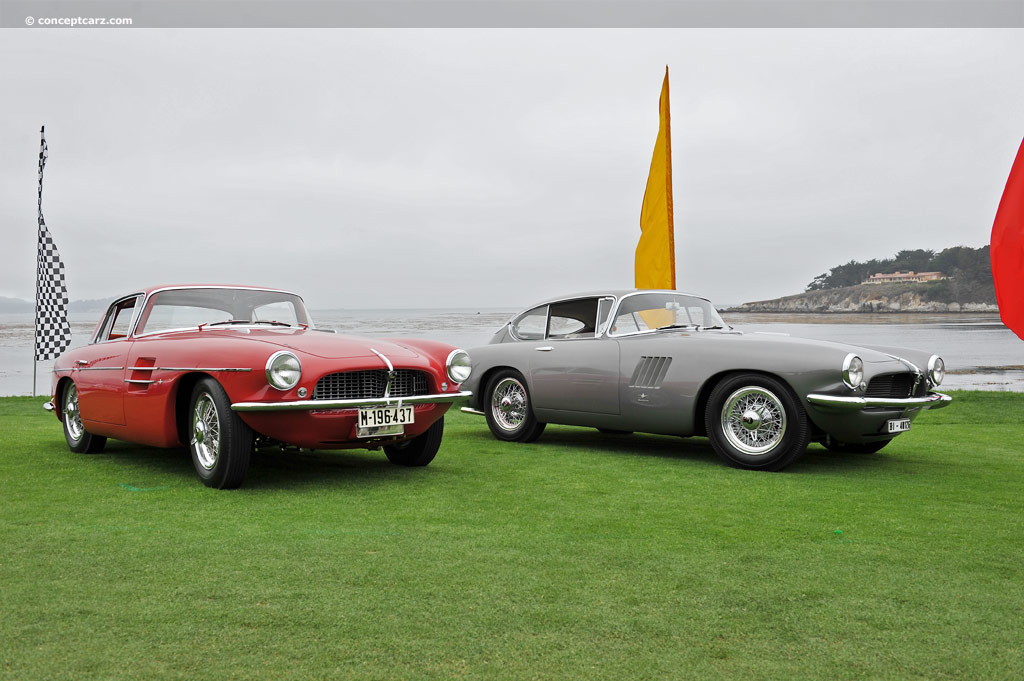
Panoramica Coupe by Touring
Chassis #: 103-150-0172
Engine #: 102-019-0172
View info and history
by Daniel Vaughan | Sep 2012
Related Reading : Pegaso Z102B History
Named after Pegasus, the winged horse of Greek mythology, the Pegaso Car Company produced very rare and exotic sports vehicles. Wilfredo Ricart was one of Enzo Ferraris colleagues at Alfo Romeos race department. He left Alfa Romeo after the war and teamed p with various engineers and technicians to begin working on their own vehicle. This eventually resulted in the Pegaso Z102. A very modern....
Continue Reading >>
Continue Reading >>
Similarly Sized Vehicles
from 1956
1956 Pegaso Z-103 Vehicle Profiles
Recent Vehicle Additions
Performance and Specification Comparison
Z102B Specification Comparison by Year
Year
Production
Wheelbase
Engine
Prices
92.00 in.
8 cyl., 150.85 CID.
8 cyl., 150.85 CID., 165.00hp
8 cyl., 171.84 CID., 170.00hp
8 cyl., 193.93 CID., 200.00hp
8 cyl., 171.84 CID., 250.00hp
8 cyl., 193.93 CID., 275.00hp
8 cyl., 150.85 CID., 165.00hp
8 cyl., 171.84 CID., 170.00hp
8 cyl., 193.93 CID., 200.00hp
8 cyl., 171.84 CID., 250.00hp
8 cyl., 193.93 CID., 275.00hp
92.00 in.
8 cyl., 150.85 CID.
8 cyl., 150.85 CID., 165.00hp
8 cyl., 171.84 CID., 170.00hp
8 cyl., 193.93 CID., 200.00hp
8 cyl., 150.85 CID., 165.00hp
8 cyl., 171.84 CID., 170.00hp
8 cyl., 193.93 CID., 200.00hp
92.00 in.
8 cyl., 150.85 CID.
8 cyl., 171.84 CID., 170.00hp
8 cyl., 193.93 CID., 275.00hp
8 cyl., 171.84 CID., 170.00hp
8 cyl., 193.93 CID., 275.00hp
$18,050 - $18,050
Related Automotive News

Past Best of Show Winners at The Pebble Beach Concours d'Elegance
overview1
The 70th anniversary of the Pebble Beach Concours dElegance was celebrated with a spectacular display of previous Best of Show winners. Thirty-seven examples graced the showfield and many were still with the same owners who raised the trophy...
TWO FCA US PLANTS JOIN WORLD CLASS MANUFACTURING BRONZE RANKS
Mack Avenue Engine and Toledo Machining become 18th and 19th facilities, respectively, to achieve World Class Manufacturing bronze status
Mack Avenue produces award-winning Pentastar V-6 engine
Toledo Machining manufactured steering columns and to...

ALL-NEW 2014 JEEP CHEROKEE TO START AT $22,995
Jeep® raises the bar with legendary benchmark 4x4 capability, world-class on-road dynamics, fuel economy of more than 30 mpg, modern and progressive new design, world-class craftsmanship, and an array of advanced safety and technology features
All-...

EXCEPTIONAL ROSTER OF PORSCHE RACE CARS JOIN THE STARTING GRID FOR RM'S EAGERLY AWAITED MONTEREY SALE
RM Auctions, the worlds largest collector car auction house for investment-quality automobiles, has announced more star consignments for its highly anticipated Monterey sale, August 17–18, in California, this time a remarkable group of Porsches. Comprising...

1996 24 Hours of Le Mans: Finally a Victory, Still 2nd
Thierry Boutsens first encounter with the 24 Hours of Le Mans would come only after a few years of his being involved in racing. In 1981, Boutsen would partner with Serge Saulnier and Michel Pignard to drive the WM P81. It would prove to be an introductory...























